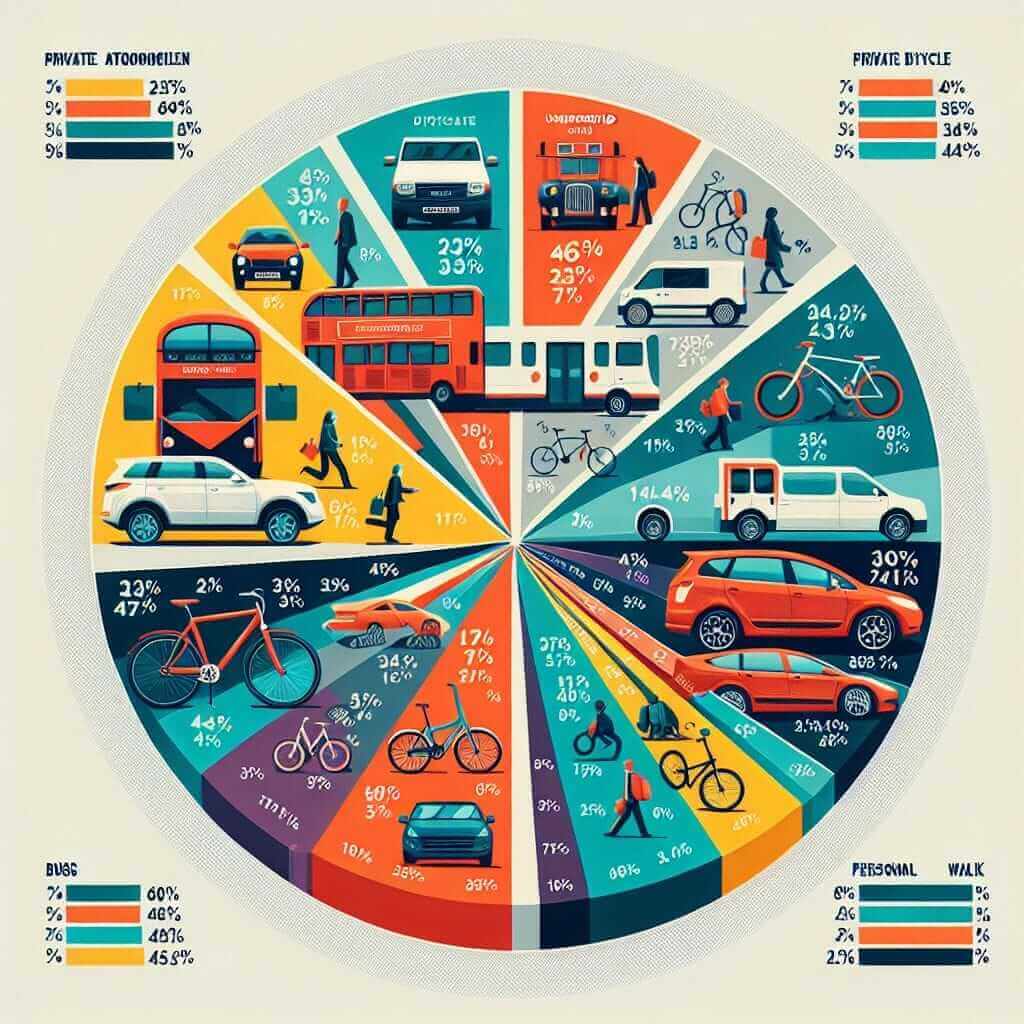As an IELTS instructor with over 20 years of experience, I’ve seen countless students struggle with data interpretation in the Speaking test, especially when it comes to pie charts. This comprehensive guide will equip you with the skills and strategies needed to confidently analyze and describe pie charts in IELTS Speaking, helping you achieve your desired band score.
Understanding Pie Charts in IELTS
Pie charts are visual representations of data using sectors of a circle. Each sector represents a different category, and its size corresponds to the proportion or percentage of the whole that the category represents. In the IELTS Speaking test, you might encounter pie charts in Part 3, where you’ll be asked to describe and analyze data presented visually.
Key Steps to Describe a Pie Chart Effectively
Here’s a breakdown of the steps involved in accurately and fluently describing a pie chart:
1. Analyze the Chart Carefully
Before you start speaking, take a moment to understand the information presented. Pay attention to:
- Title: The title provides context and tells you what the pie chart is about.
- Sectors: Identify the different categories represented by each sector.
- Percentages: Note the percentage value assigned to each sector.
- Trends: Look for significant differences, similarities, or patterns in the data.
2. Begin with an Overview
Start by stating what the pie chart displays. Use phrases like:
- “This pie chart illustrates…”
- “The chart provides a breakdown of…”
- “As can be seen from the pie chart…”
3. Highlight Key Features
Don’t aim to describe every single detail. Instead, focus on the most significant features:
- Largest and Smallest Sectors: Use comparative language:
- “The largest proportion of…”
- “The smallest segment represents…”
- Significant Differences:
- “…is considerably larger than…”
- “…accounts for almost half the total, while…”
- Similarities:
- “…are relatively similar in proportion.”
- Trends:
- “There is a noticeable increase in…”
- “A significant decrease can be observed in…”
4. Use Precise Vocabulary and Grammar
Employ a variety of vocabulary and grammatical structures to showcase your language proficiency:
- Fractions and Percentages: “one-quarter,” “half,” “75%,” “a mere 5%”
- Comparative and Superlative Adjectives: “larger,” “the smallest,” “the most significant”
- Data Verbs: “account for,” “represent,” “constitute”
- Trend Language: “increase,” “decrease,” “fluctuate,” “remain stable”
5. Conclude with a Summary or Insight
Conclude your description by:
- Summarizing the main trends.
- Drawing a relevant conclusion based on the data.
- Providing a brief opinion or observation if applicable.
Example from IELTS Speaking
Let’s examine a sample pie chart and apply these steps:
(Imagine a pie chart showing the preferred modes of transportation for commuting to work in a city.)

Possible Description:
“This pie chart shows the different modes of transport used by people commuting to work in London. As can be seen, private cars are the most popular choice, accounting for almost half of the commuters at 45%. Public transport is the second most preferred option, with buses comprising 25% and the underground making up 15%. Cycling and walking are less common, representing 10% and 5% respectively. In conclusion, while private cars remain the dominant mode of transport in London, a significant proportion of commuters rely on public transportation.”
Tips to Excel in Pie Chart Description
- Practice Makes Perfect: Familiarize yourself with various pie chart samples and practice describing them aloud.
- Time Management: Allocate your time wisely during the test. Don’t spend too long on a single detail.
- Fluency over Perfection: Focus on speaking smoothly and coherently. Minor grammatical errors are less important than overall clarity.
- Don’t Invent Data: Stick to the information provided in the chart. Avoid making assumptions or adding your own interpretations.
- Show Confidence: Speak clearly and confidently, even if you’re unsure about a specific detail.
By following this guide and practicing regularly, you can improve your ability to describe pie charts effectively and boost your confidence for the IELTS Speaking test. Remember, the key is to be clear, concise, and analytical in your description.